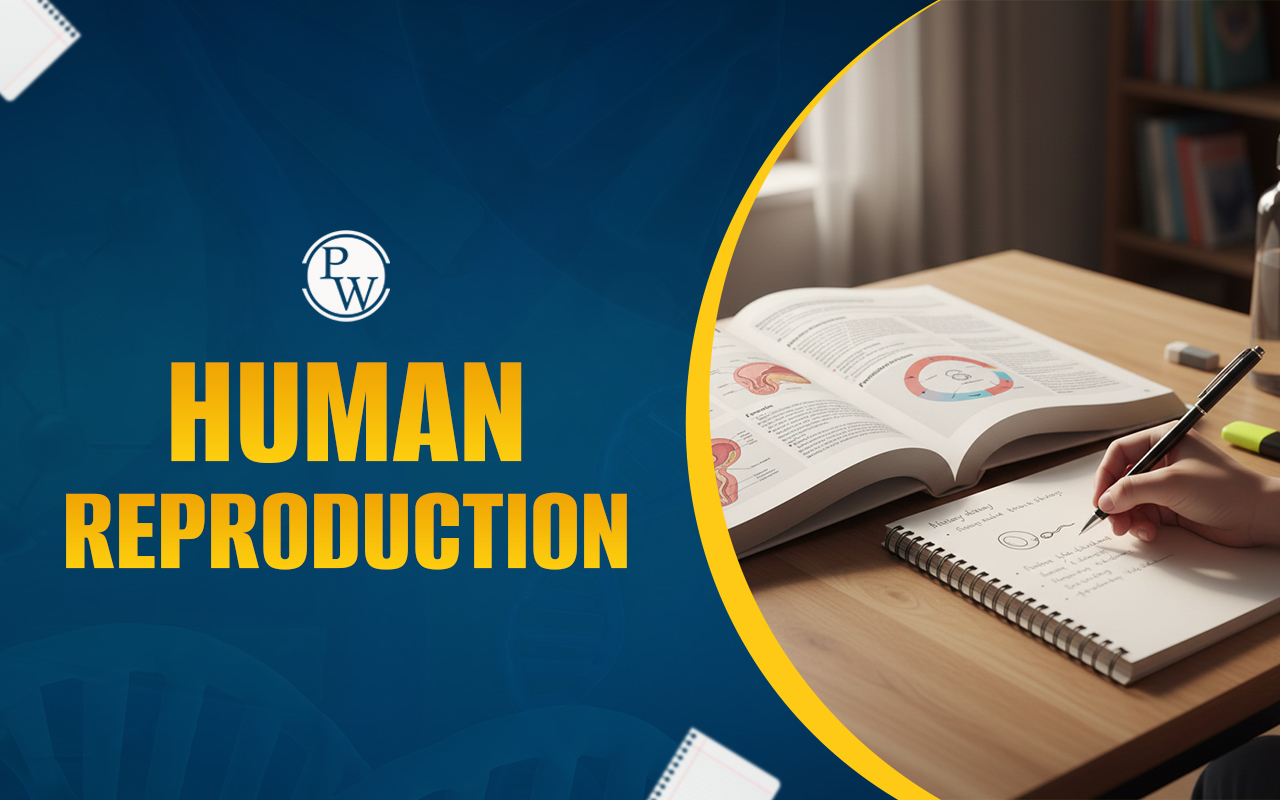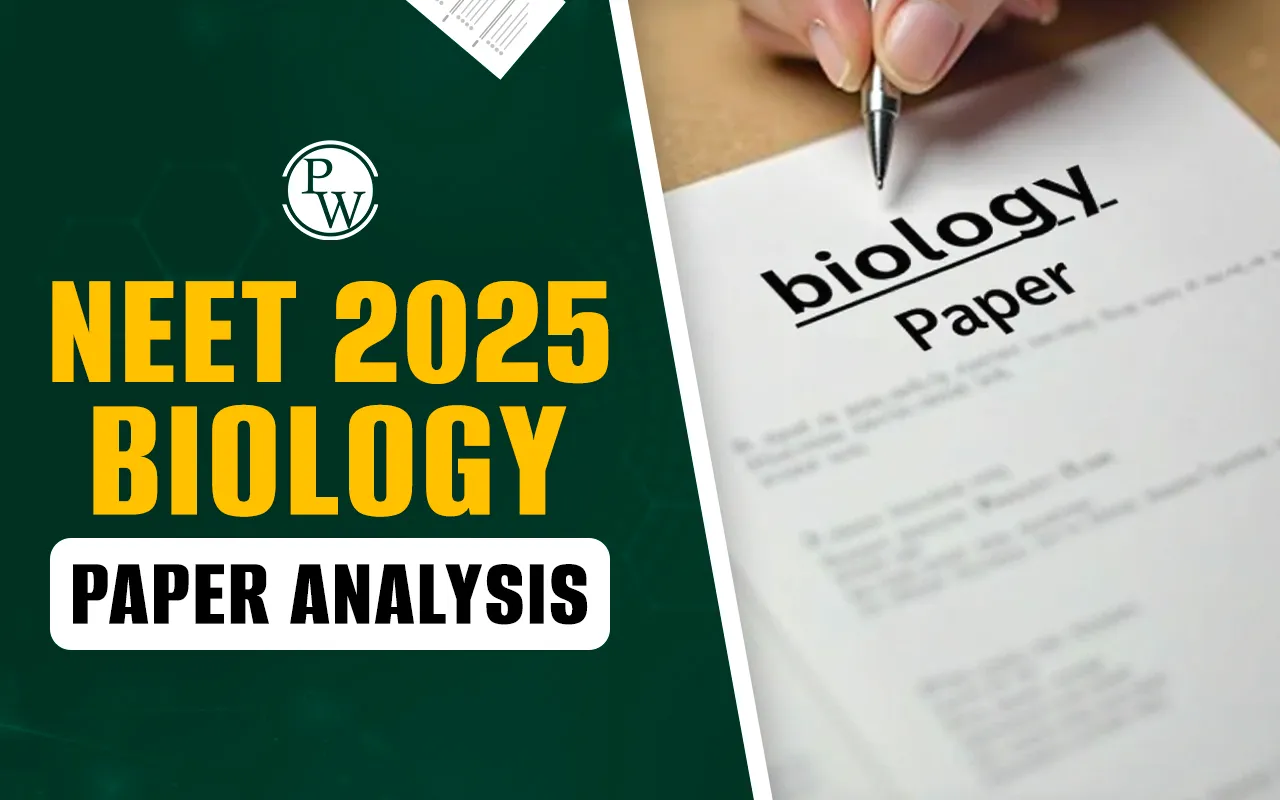

NEET Exam Pattern 2026: NTA is expected to follow the same pattern as NEET 2025 — 180 compulsory MCQs, a 3-hour duration, and a +4/−1 marking scheme (720 total marks). This guide explains the full exam pattern, number of questions, marking scheme, duration, language options, topic weightage, difficulty level and important exam day tips.
Key Facts Box
-
Total questions: 180 (all compulsory)
-
Total marks: 720
-
Duration: 3 hours (180 minutes)
-
Marking scheme: +4 for correct, −1 for wrong, 0 for unattempted
-
Question type: MCQs
Last checked: Nov 19, 2025 — Update when NTA releases NEET 2026 official date.
NEET 2026: Quick Overview
NEET 2026 is expected to follow the NEET 2025 structure with a total of 180 compulsory MCQs. Section B has been removed, so all questions must be attempted. The exam will be conducted in offline pen-and-paper mode.
NEET UG is conducted by the National Testing Agency (NTA). Any change in duration, number of questions, or exam structure will only be confirmed through an official NTA notification. As per the revised pattern, NEET 2026 is expected to have 180 compulsory questions to be completed in 180 minutes.
|
NEET Exam Pattern 2026 Overview |
|
|---|---|
| Exam Name | National Eligibility cum Entrance Test (NEET) |
| Conducting Body | National Testing Agency |
| Mode of the examination | Pen-Paper Mode |
| Duration of the exam | 3 hours (Updated) |
| Total Questions | 180 questions from NEET 2026 (Before 200 questions) |
| Total Marks | 720 Marks |
| Question Type | MCQs |
| Marking Scheme |
|
| NEET Languages | 13 (English, Hindi, Assamese, Bengali, Gujarati, Marathi, Tamil, Telugu, Oriya, Malayalam, Kannada, Punjabi and Urdu |
NEET Previous Year Question Papers (2021-2025) PDF with Solution
Download Now
NEET 2026 Exam Date & Important Deadlines
The official NEET 2026 exam date has not been released by NTA yet. This section will be updated when NTA publishes the schedule.
Expected Timeline (Based on Previous Years):
-
Exam Date: To be announced
-
Application Form: December 2025 (tentative)
-
Admit Card: 3–5 days before exam
-
Result: 4–6 weeks after exam
NEET Exam Duration (2026)
In NEET 2025, the exam duration was changed to 3 hours (180 minutes) with no optional questions. NEET 2026 is expected to follow the same duration.
NEET Exam Pattern 2026 — Number of Questions
The NEET 2026 exam will include 180 compulsory questions:
-
Physics: 45
-
Chemistry: 45
-
Biology (Botany + Zoology): 90
There will be no optional questions.
NEET Exam Pattern 2026 — Marking Scheme
The NEET 2026 examination will consist of a total of 180 MCQs.
The marking scheme is:
-
Correct Answer: +4
-
Incorrect Answer: −1
-
Unattempted: 0
-
Total Marks: 720
NEET Marking System Table:
-
Correct Answer → +4
-
Incorrect Answer → −1
-
More than one marked answer → −1
-
Unanswered → 0
-
Extra attempted → 0
NEET Exam Pattern 2026 and Total Marks
Total marks for NEET 2026 = 720
(180 questions × 4 marks each)
NEET Number of Questions — Subject-wise Marks Distribution
| NEET Exam Pattern 2026 Marking Scheme | |||
|---|---|---|---|
| Sl. No. | Subject | No. of Questions | Total Marks |
| 1 | Physics | Section A = 45 | 180 |
| 2 | Chemistry | Section A = 45 | 180 |
| 4 | Zoology | Section A = 45 | 180 |
| 3 | Botany | Section A = 45 | 180 |
| Total | 180 | 720 | |
Each subject contributes 45 questions (180 marks each for Physics, Chemistry, Botany, and Zoology), making the total 720 marks.
NEET Exam Pattern 2026 – Detailed Marking Rules
The NEET marking scheme 2026 is as follows:
- Each question has 4 marks.
- For each question, the right response earns 4 marks.
- For each wrong response, 1 mark is deducted.
- If more than one option is determined to be accurate after a key is challenged, any/all of the highlighted multiple correct possibilities will receive 4 marks.
- If a question is not attempted or answered, no marks are given.
- 4 marks will be given to everyone who attempted the question if all of the options are determined to be accurate.
|
NEET Marking System |
|
|---|---|
| Response Type | Marks awarded |
| Correct answer | +4 |
| Incorrect answer | -1 |
| Question with more than one response | -1 |
| Unanswered question | 0 |
| Extra attempted question | 0 |
NEET carries a total of 720 marks. Physics contributes 180 marks, Chemistry 180 marks and Biology 360 marks.
NEET Exam Pattern 2026 Weightage Of The Topics
NEET topic weightage is based on past exam analyses.
NEET Physics Topic Distribution
Physics weightage includes major units such as Mechanics, Electricity, Magnetism, Optics and Modern Physics.
| NEET Physics Topic Distribution | |
|---|---|
| Unit | NEET Physics Topic Wise Weightage |
| Physical World and Measurement | 2% |
| Kinematics | 7% |
| Laws of Motion | 7% |
| Work, Energy and Power | 4% |
| System of Particles and Rotational Motion | 4.50% |
| Gravitation | 4.50% |
| Properties of Bulk Matter | 9% |
| Oscillations and Waves | 7% |
| Thermodynamics | 4.50% |
| Behavior of Perfect Gas and Kinetic Theory | 2% |
| Electrostatics | 4% |
| Current Electricity | 9% |
| Magnetic Effects of Current and Magnetism | 7% |
| Electromagnetic Induction and Alternating Currents | 4% |
| Electromagnetic Waves | 2% |
| Optics | 4.50% |
| Dual Nature of Radiation and Matter | 4% |
| Atoms and Nuclei | 7% |
| Electronic Devices | 7% |
NEET Chemistry Topic Distribution
Chemistry weightage is divided into Inorganic, Organic and Physical Chemistry, each carrying specific chapter-wise distribution.
| NEET Chemistry Topic wise Distribution | |
|---|---|
| Physical Chemistry | |
| Chapter | No. of Questions |
| Solid state | 2 |
| States of Matter | 2 |
| Thermodynamics | 1 |
| Electrochemistry | 2 |
| Surface chemistry | 1 |
| Solutions | 2 |
| Chemical Kinetics | 2 |
| Nuclear Chemistry | 1 |
| Mole concept | 1 |
| Atomic structure | 1 |
| Ionic equilibrium | 1 |
| Inorganic Chemistry | |
| Chapter | No. of Questions |
| Chemical Bonding | 5 |
| s-block | 2 |
| p-block | 3 |
| d and f block | 2 |
| Metallurgy | 2 |
| Environmental chemistry | 1 |
| Coordination chemistry | 2 |
| Organic Chemistry | |
| Chapter | No. of Questions |
| Some basic principles and techniques | 1 |
| Hydrocarbons | 4 |
| Haloalkanes and Haloarenes | 2 |
| Alcohol, Phenol and Ether | 1 |
| Carbonyl compound | 3 |
| Amine | 2 |
| Biomolecules | 1 |
| Polymers | 1 |
| Chemistry in Everyday Life | 1 |
NEET Biology Topic Distribution
Biology carries the highest weightage with 90 questions, equally split into Botany and Zoology.
| NEET Biology Topic wise Distribution | ||
|---|---|---|
| Class XI | ||
| Unit | Chapters | Weightage (approximate) |
| I | Diversity of Living Organisms | 12% |
| II | Structural Organisation in Plants & Animals | 9% |
| III | Cell: Structure and Function | 8% |
| IV | Plant Physiology | 8% |
| V | Human Physiology | 16% |
| Class XII | ||
| Unit | Chapters | Weightage |
| VI | Reproduction | 11% |
| VII | Genetics and Evolution | 13% |
| VIII | Biology and Human Welfare | 9% |
| IX | Biotechnology and its Applications | 4% |
| X | Ecology and Environment | 10% |
NEET Exam Pattern 2026 Language Options
NEET 2026 is expected to be conducted in 13 languages:
English, Hindi, Assamese, Bengali, Gujarati, Marathi, Tamil, Telugu, Oriya, Malayalam, Kannada, Punjabi, Urdu.
Important rules:
-
If English is selected → Question paper only in English
-
If Hindi → Bilingual (Hindi + English)
-
If a regional language → Regional language + English
-
English version will be treated as final in case of translation conflict
Important Points to Remember while Choosing the Medium of NEET 2026
The candidates will be required to choose the following medium when choosing the language of the NEET exam.
- The candidates have to choose their medium of NEET exam in the application form
- The language once chosen by the candidate will be mentioned in the NEET examination
- All the questions in the NEET question paper will be in English if the candidate chooses it
- Whereas, those opting for another language will be given bilingual question paper
How to Avoid Negative Marking (Practical Tips)
To avoid losing marks due to negative marking:
-
Do not guess answers randomly
-
Attempt only those questions you are confident in
-
Read each question carefully before marking
-
Review answers if time permits
-
Do not mark multiple answers for the same question
-
Maintain accuracy over speed
NEET Exam Pattern - Difficulty Level of Question Paper
The candidates preparing for the NEET 2026 exam should go through the previous year's exam analysis. This helps them to understand the topic-wise weightage and overall difficulty level. Here is a quick analysis of the NEET 2025 Exam.
| NEET Exam Pattern, Difficulty Level of Question Paper | |
|---|---|
| Details | NEET 2025 Exam Analysis |
| NEET 2025 Overall Difficulty Level | Moderate to Difficult |
| Physics Difficulty Level | Tough |
| Chemistry Difficulty Level | Moderate |
| Biology Difficulty Level | Easy but lengthy |
| Most Difficult Section | Physics |
| Easiest Section | Zoology and Botany |
| Difficult Section | Chemistry and Physics |
| Topics with High Weightage in Physics |
Units and Measurements, Rotational Motion, Current Electricity, Moving Charges and Magnetism |
| Topics with High Weightage in Chemistry |
Some Basic Principles and Techniques, Coordination Compounds, Hydrocarbons |
| Topics with High Weightage in Botany |
Cell: The Unit of Life, Plant Kingdom, Molecular Basis of Inheritance, Sexual Reproduction in Flowering Plants |
| Topics with High Weightage in Zoology |
Structural Organisation in Animals, Animal Kingdom, Biotechnology - Principles and Processes, Human Reproduction |
NEET Syllabus Snapshot (Class 11 & 12)
The NEET 2026 syllabus includes topics from Class 11 and 12 for Physics, Chemistry, and Biology. Below is the subject-wise list based on the official NTA syllabus.
| NEET Exam Pattern 2026 and Syllabus | |
|---|---|
| Subject | NEET Syllabus |
| Physics Syllabus (Class 11 & 12) |
|
| Chemistry Syllabus (Class 11 & 12) |
|
| Biology Syllabus (Class 11 & 12) |
|
NEET Exam Pattern 2026 FAQs
How many questions are there in NEET 2026?
How long is the NEET exam?
What is the NEET marking scheme?
Is NEET only MCQ-based?
Will NEET 2026 be conducted in two phases?
In which languages is NEET conducted?













